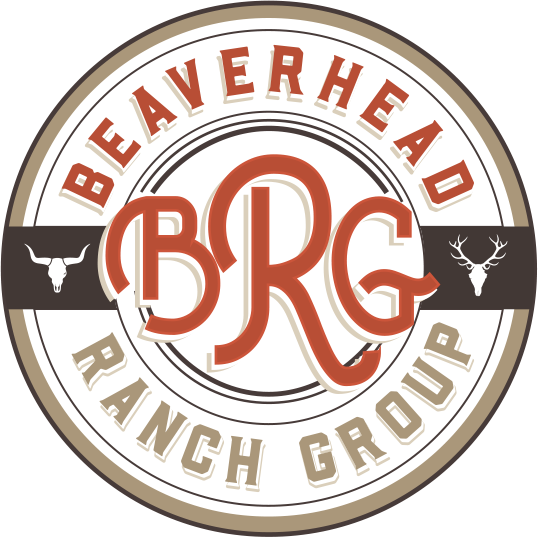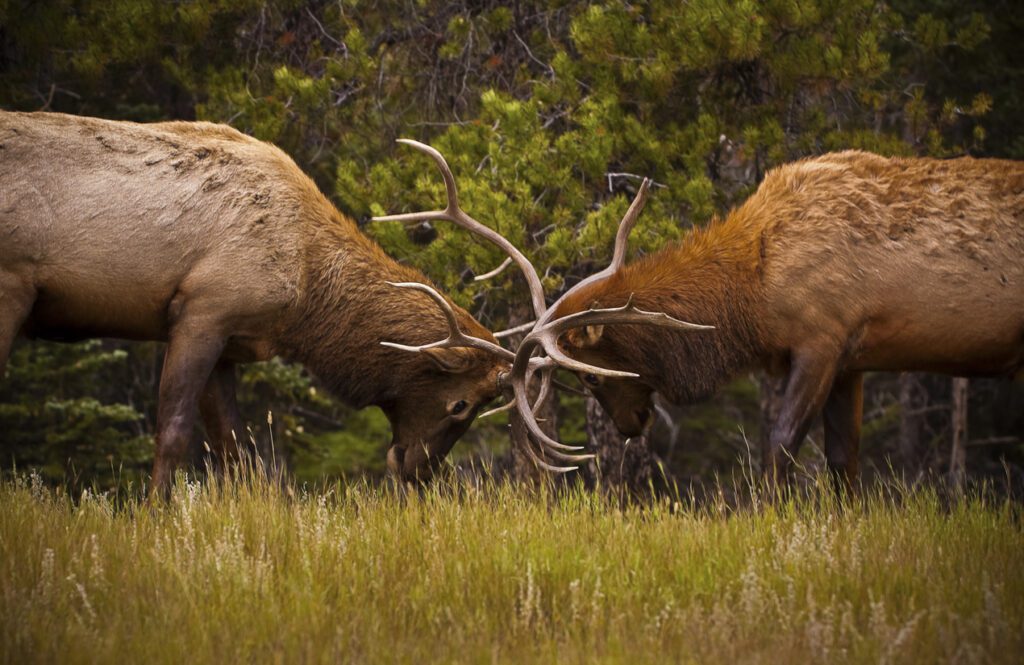New Mexico’s hunting opportunities are as abundant and diverse as its terrain and habitat. Throughout the vast landscapes you will find big game hunts for trophy bull elk, mule deer, pronghorn and more exotic species including ibex, oryx, and Barbary sheep. Elk hunting here is considered world-class with many bull elk harvested each year in the upper 300” and lower 400” classes.
It’s this diversity of game combined with breathtaking landscapes and friendly cost of ownership that make owning New Mexico hunting ranches attractive to so many savvy hunters and landowners.
Overview
For the purposes of this article, we are going to focus on how New Mexico Game and Fish regulates elk hunting and private land elk authorizations (or “permits”). Private land permits for other large game species are often times related the guidelines of the elk permits but there are units within the state where rules for mule deer, antelope and other big game are more independent.
EPLUS is the system utilized by Game and Fish and is an acronym for Elk Private Lands Use System. The EPLUS program was created as a means of compensation to landowners in recognition of the stresses and damage that elk can present to infrastructure and native feeds. The system leverages important benefits that private lands make to the elk populations and hunting opportunities in New Mexico. The program gives hunters and landowners a way to work together to effectively manage and hunt elk on private lands.
“Through EPLUS the New Mexico Department of Game and Fish distributes a portion of the State’s elk hunting opportunity to qualifying private landowners. Landowners receive private-land elk authorizations from the Department which can be used by hunters to buy private-land elk licenses” according to NMGF.
How EPLUS Works
NMGF, through years of study and data, has created three different types management zones for elk within the state – Primary Zones, Secondary Zones and Special Management Zones.
Primary Zone: In these zones elk management is highly focused and private-land elk permits are issued to landowners through an acreage-based scoring formula, taking in consideration the quality of the local herd, the feed, cover and water available to the elk on that property. The Department issues private-land elk authorizations to eligible landowners in the Primary and Special Management Zones through the EPLUS program. These authorizations can be bartered, sold, or traded to hunters. An authorization code is then used by hunters to buy a private-land elk license. These authorizations can be set as Ranch Only (valid only on private land) or Unit-Wide (ability to hunt public lands within the unit). Unit-wide authorizations are not available in GMUs 4 and 5A; ranches in these units may only receive ranch-only authorizations. If a landowner chooses to apply for unit-wide authorizations, then he/she is obligated to let the public hunt their private lands in exchange.
The total number and type of authorizations available to landowners that are within the boundaries of a Primary Management Zone is determined by the percentage of public land to private land.
Once the number of authorizations available to private lands in a unit is determined, ranches will receive individual authorizations based on the percentage of the private land that ranch has within the unit. For example, if a ranch comprises 10% of the private land in the unit, it will receive approximately 10% of the authorizations available. Ranches able to receive at least one whole authorization through this formula are considered Base Ranches.
Small Contributing Ranches within Primary Zones
When a property within a Primary Zone is not large enough to receive at least one whole authorization through the formula, it is considered a Small Contributing Ranch (SCR). SCRs compete for authorizations in a random draw weighted on the ranches ranch score.
The number of authorizations available to landowners in these zones is subject to change. Landowners cannot be guaranteed a specific number of authorizations per year. The acreage based formula used to issue authorizations is described in detail in the EPLUS rule (19.30.5 NMAC).
Secondary Zone: In these zones NMGF has no specific elk management goals set and licenses are available over-the-counter for private land in unlimited numbers. Private-land elk licenses in these zones are available by means of a Ranch Code received from a landowner who is registered through the EPLUS program. These authorizations can be bartered, sold, or traded to hunters. Secondary Zone authorizations are ranch only permits.
Special Management Zone: In these zones, private-land elk authorizations are issued to private landowners by the department on a ranch-by-ranch basis. In these cases the landowner has the opportunity to request the number of permits that he or she feels like the property can support and negotiate final authorization numbers with Game and Fish. In Special Management zones, the authorizations are ranch only, meaning that the animals can only be hunted n the private land or, with permission of another landowner, on another private property. Landowner authorizations in these zones cannot be used as unit wide tags for hunting on public lands.
The NMGF web site states “Landowners wishing to participate in the EPLUS program must fill out the correct application and adhere to any related application deadlines. Properties which qualify for the EPLUS program and receive private-land elk authorizations may use, sell, barter or trade the elk authorizations to hunters. An elk authorization is then used by the hunter to purchase a private-land elk license.”
The Process
When a Buyer purchases an EPLUS-eligible property in New Mexico there is a simple process for registering for the system. Since the state is divided into three elk management zones, the application and qualifications will differ for landowners depending upon which management zone their ranch is located. So, step one in the process is to understand which one your property is located. An interactive map of the Management zones can be found at https://www.wildlife.state.nm.us/hunting/maps/eplus/. Step two will be to fill and submit the appropriate application for your property, based on the zone it is located in.
Primary Zone – The Primary Zone application period runs from September through January 5 each year. If the Department determines that a property does not qualify to participate in the program, the landowner will be notified. Non-qualifying landowners have the right to request a review of the NMGF’s decision. Qualifying ranches will be included in the authorization allocation process for the license year in which they applied. Authorizations in the Primary Zone are typically issued in late May.
Most properties we see within a Primary Zone have already been enrolled in EPLUS if they are eligible. It is important to know and verify what a property has received from EPLUS historically if you are interested in owning the land for the purposes of hunting. NMGF will not guarantee the same number of permits to a new landowner that the previous owner has benefited from, but in our experience the transitions from one owner to the next have provided consistent results for landowner authorizations.
If you are considering a property within a Primary Zone that is not currently in EPLUS, and you are wanting the land for the purpose of hunting, we strongly urge you to perform thorough due diligence before purchasing the land. For buyers working with Beaverhead Ranch Group, this is a process in which we can assist.
Secondary Zone – Landowners in a Secondary Zone can enter the EPLUS system at any time of the year, there is no set application period or deadline to submit applications for the Secondary Zone.
First step is to create a Customer Account through the Department’s Online Licensing System and obtain a Customer Identification Number (CIN). The CIN is required in the application and allows the Department to link your Ranch to your Online Account where your Secondary Management Zone Ranch Code can be accessed. The second step, once you have your CIN, is to complete the Secondary Management Zone Ranch Code Application and, after department approval, a Ranch Code will be assigned to the ranch in the Online Licensing System.
Special Management Zone – There is no set deadline to submit applications for the Special Zone however applications received after June are not guaranteed to be processed prior to the start of the elk hunting season. The Department begins processing Special Zone applications in June in the order they are received.
The Special Zone includes all of GMUs 46 and 55A, and GMU 54 west of State Road 199. Accepted ranches will need to contact the NMGF’s Raton office to negotiate the number and type of authorizations for the ranch.
Summary
New Mexico’s EPLUS system has been recognized as one of the best game management programs in the country and has proven to create a balance between private landowners and public hunters. The system has been largely credited for enhancing overall genetics and abundance of trophy elk in the state, benefiting the private land hunter as well as the public land hunter as these elk move freely between public and private lands.
Beaverhead Ranch Group is well versed in the rules and regulations set forth by New Mexico Game and Fish and bring decades of state-wide knowledge and experience to our Buyers and Sellers who look to invest in our states renowned hunting properties.


